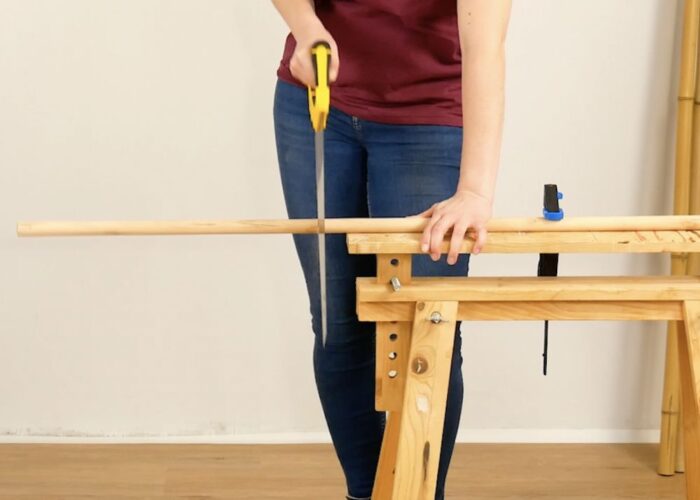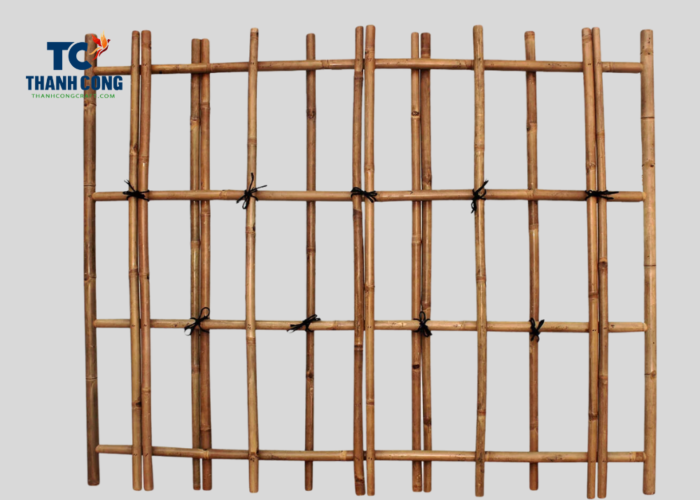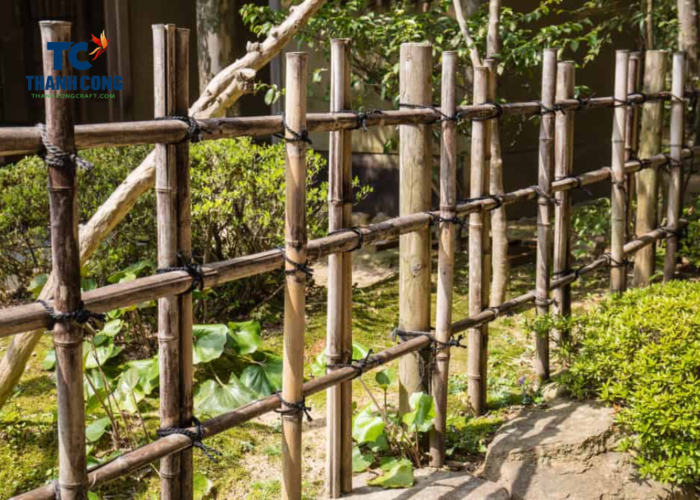Bamboo fence is a cost-effective, eco-friendly and attractive solution to protect your garden. You can make your own bamboo fence by using simple and easy-to-find materials.
In this article, we will guide you how to make a bamboo fence diy, including how to treat bamboo, how to install the frame and how to attach bamboo to the frame.
Contents [hide]
1. How to make a bamboo fence?
To make a bamboo fence for the first time, you need to prepare the following tools and materials: bamboo cutter, rope, nails, hammer, saw, ruler, pencil and bamboo. You should choose bamboo with a diameter of about 5-10 cm and a length suitable for the desired height of the fence.
Here are the steps to build a bamboo fence:
Step 1
Determine the height and length of your bamboo fence. Measure and mark the spots where you’ll place the bamboo poles.
Step 2
Install permanent stakes for your fence, dig holes for the bamboo poles. Make sure the holes are deep enough for stability.
Place the bamboo poles into the prepared holes. If you want the fence to be more secure, you can add concrete to the holes and let it set before inserting the bamboo poles.
Step 3
Making the bamboo fence panels by cutting the bamboo stem into horizontal bars with a length equal to the width of the fence. You should cut at least 3 horizontal bars for each section of the fence. You should also cut some vertical bars with a length equal to the height of the fence.

Step 2
Place the horizontal bars parallel to each other on the ground, spaced about 20-30 cm apart. Nail the ends of each horizontal bar to create a frame for the fence.

Step 3
Place the vertical bars on top of the horizontal bars, alternating them to create a grid pattern. You should leave about 5-10 cm between the vertical bars. Tie the vertical bars tightly to the horizontal bars with rope.
Step 4
Repeat the steps above until you complete the entire length of the fence. You can connect the sections of the fence together by tying the horizontal bars at both ends.

Step 5
Place the fence in the desired position and nail it to the support posts. You should choose support posts that are durable and weather resistant. You can use wood, iron or bamboo as support posts.
2. FAQs
2.1 Is a bamboo fence a good idea?
A bamboo fence can indeed be a commendable choice for various reasons. Its aesthetic appeal is notable, bringing a natural and visually pleasing aspect to outdoor spaces. Beyond its beauty, bamboo is a highly sustainable material, characterized by rapid growth and minimal environmental impact during harvesting.
Durability is another positive aspect, provided that the bamboo is appropriately treated and well-maintained. Applying protective finishes can enhance its resistance to weathering. The versatility of bamboo fencing is also advantageous, offering various styles and designs to complement different architectural and landscaping preferences.
For those on a budget, bamboo fencing is a cost-effective option compared to alternatives like wood or metal. Moreover, depending on the style and density chosen, bamboo fences can provide an effective level of privacy by obstructing the view from outside.
2.2 How much does it cost to build a bamboo fence?
The cost of building a bamboo fence can vary widely based on several factors such as the type of bamboo, the size and design of the fence, and regional pricing differences. Here are some general considerations:
- Type of Bamboo: The cost of bamboo can vary depending on the species and quality. Some varieties are more expensive than others. Clumping bamboo varieties are often pricier than running bamboo.
- Size of the Fence: The overall size of the fence, including both height and length, will impact the cost. Larger fences will require more bamboo materials and may involve higher labor costs for installation.
- Design Complexity: If you opt for a simple design, the cost may be lower compared to a more intricate or customized design. Additional features such as decorative elements or special finishes can also add to the overall cost.
- Installation Costs: Labor costs for the installation of the bamboo fence can vary based on local labor rates, the complexity of the installation process, and whether you choose to hire professionals or do it yourself.
- Additional Materials: Depending on the design and structure of the fence, you may need additional materials such as fasteners, sealants, or concrete for anchoring posts.
2.3 What is the disadvantage of bamboo fence?
While bamboo fences offer various advantages, it’s essential to consider potential disadvantages as well. Here are some drawbacks associated with bamboo fencing:
- Bamboo is prone to rotting and insect damage, especially if not treated properly.
- Bamboo can fade and lose its durability when exposed to sunlight and harsh weather.
- Bamboo can pose a security issue as it is not sturdy and easy to destroy.
- Bamboo may not match the architectural style and design of the house or the surrounding area.
Therefore, when choosing a bamboo fence, you should carefully weigh the pros and cons of it, as well as the maintenance and replacement costs
If you have any further questions about how to make a bamboo fence, don’t hesitate to send thanhcongcraft an email us at info@thanhcongcraft.com or message us at WhatsApp: +84967485411. Hope to serve you soon! Best regard!


